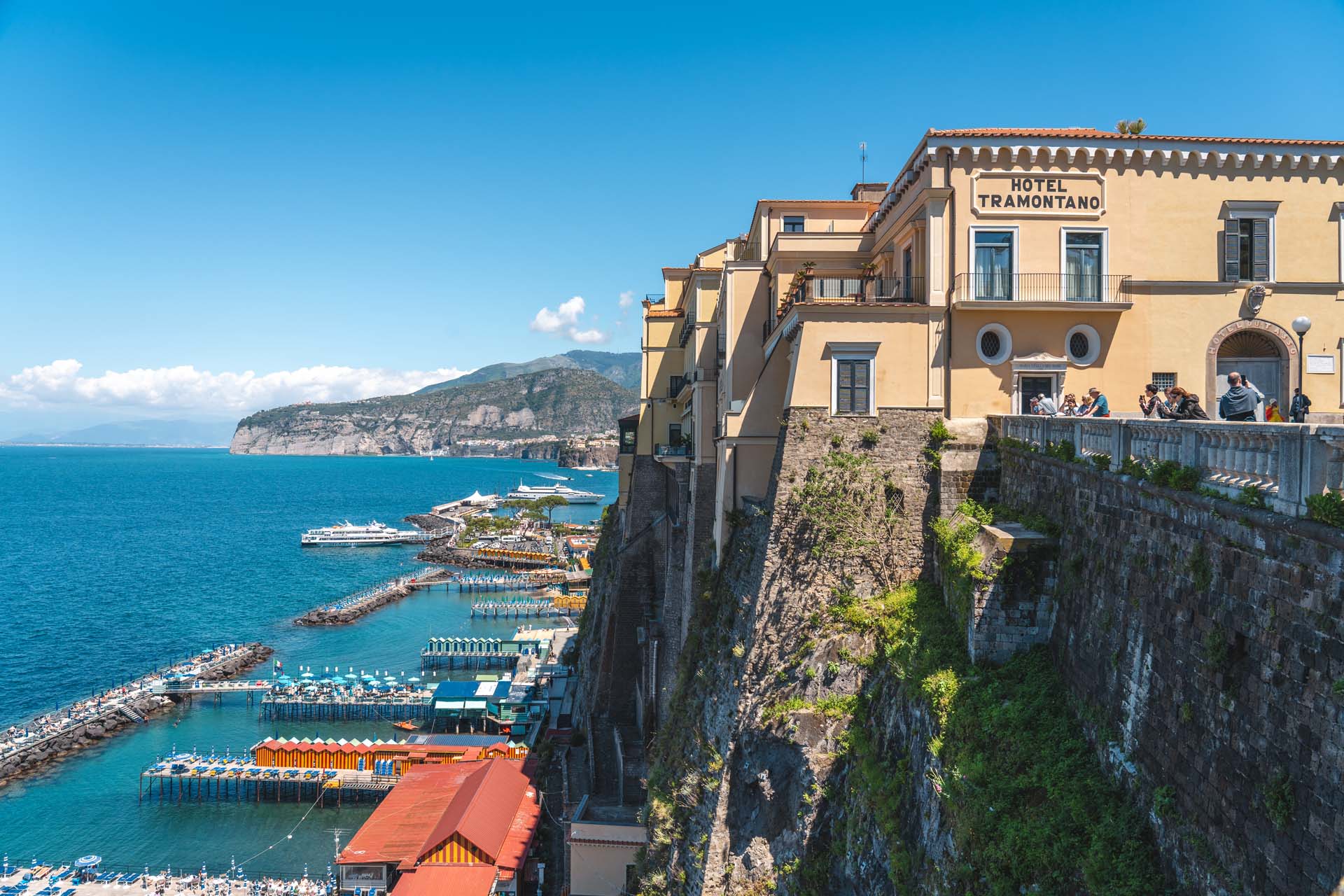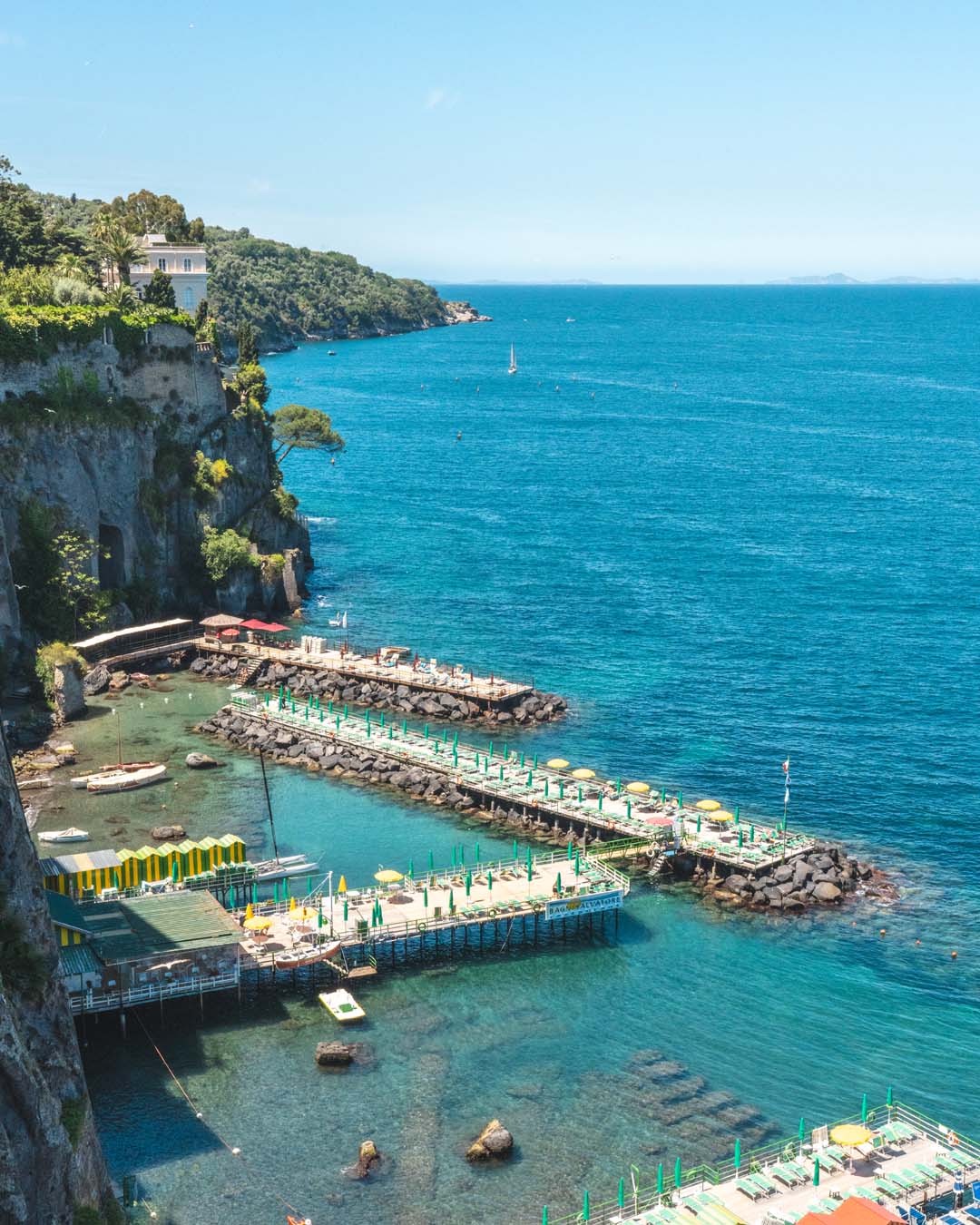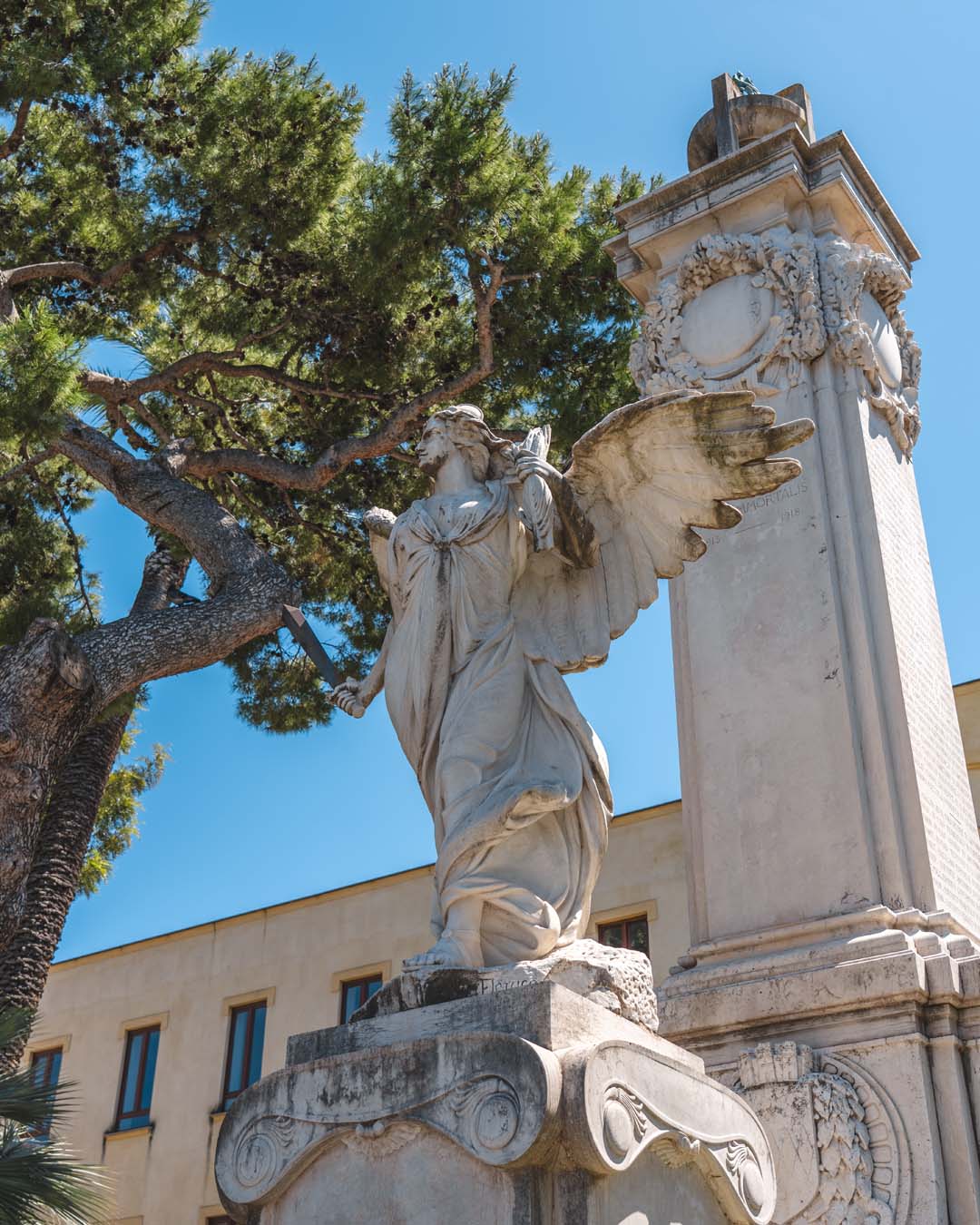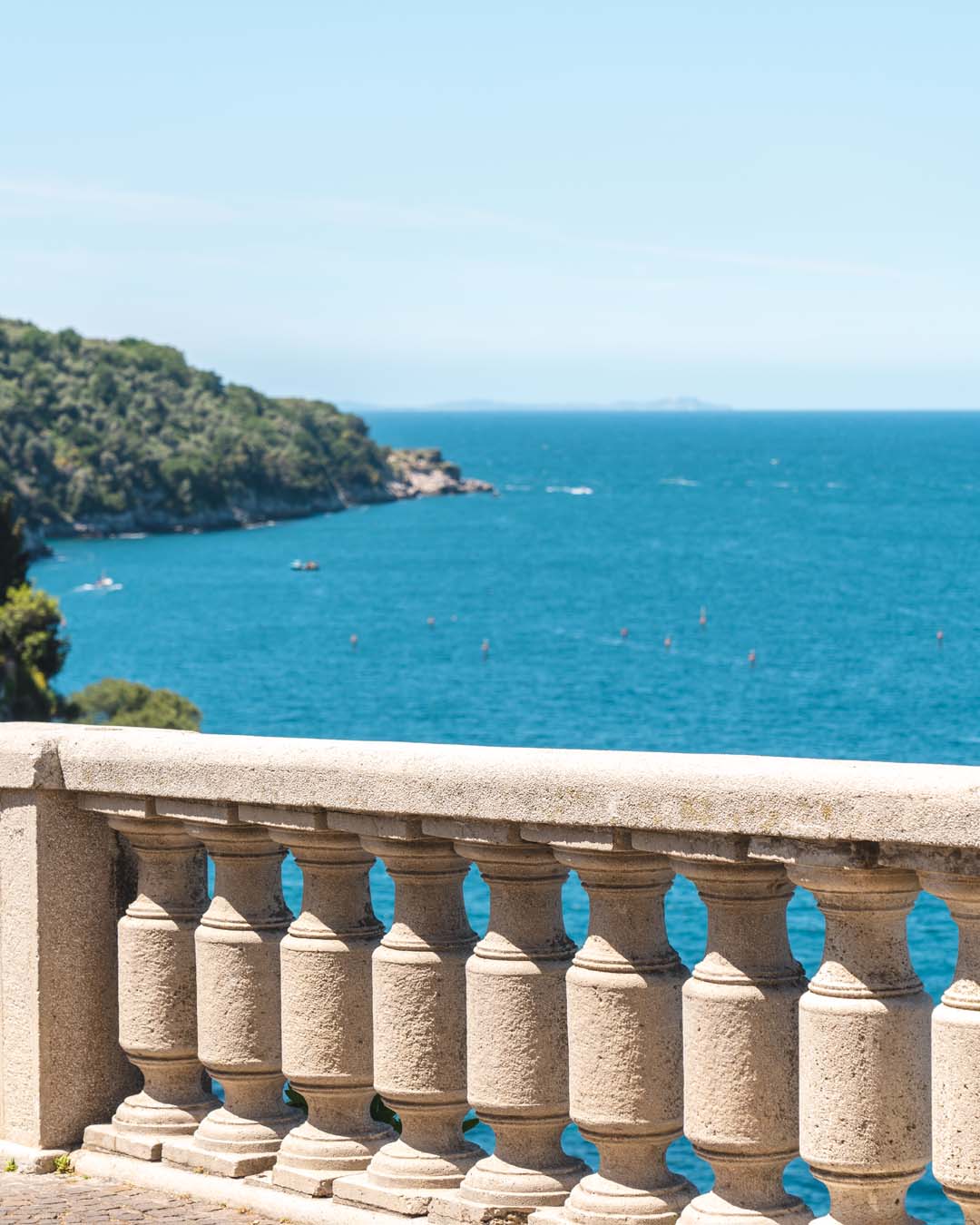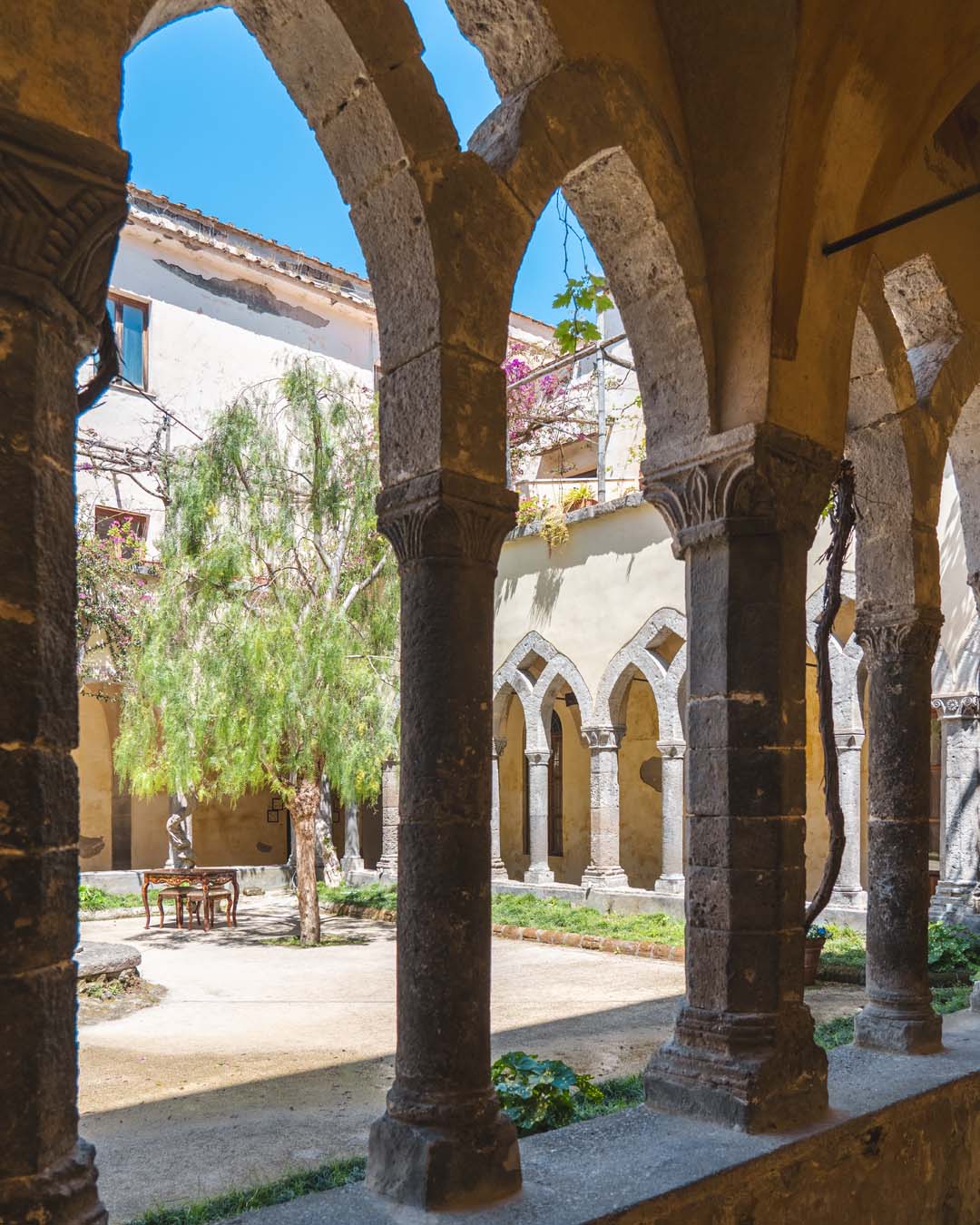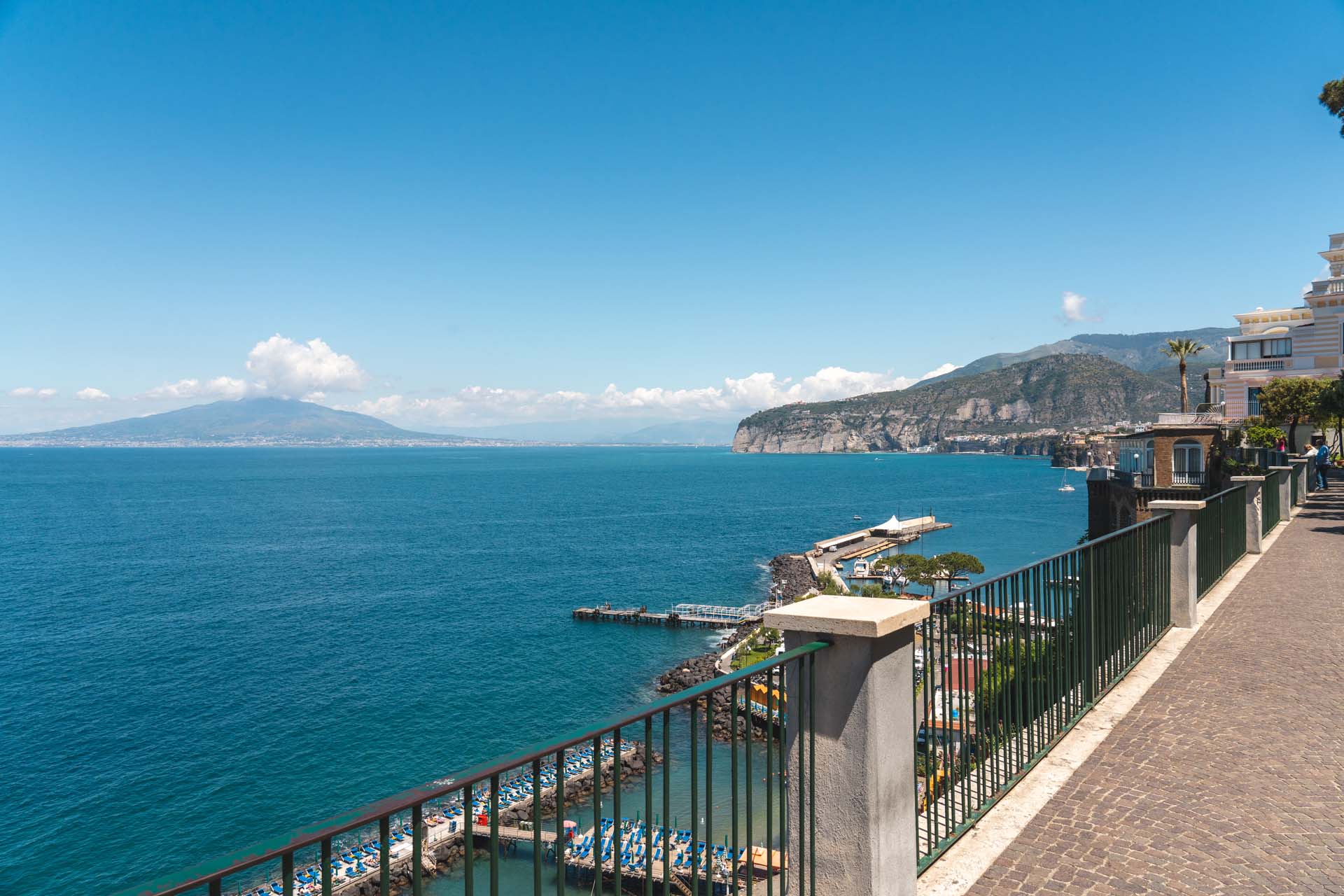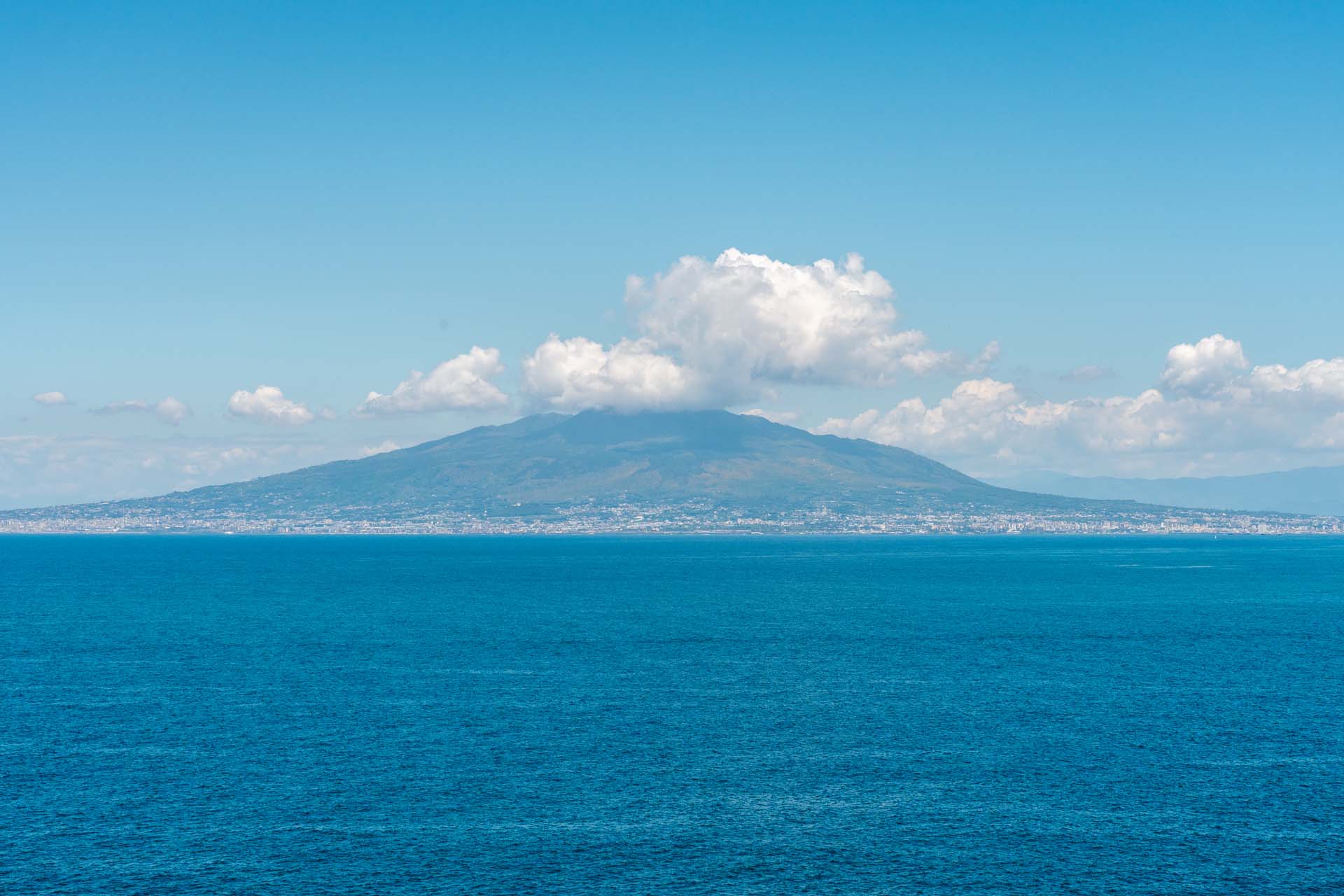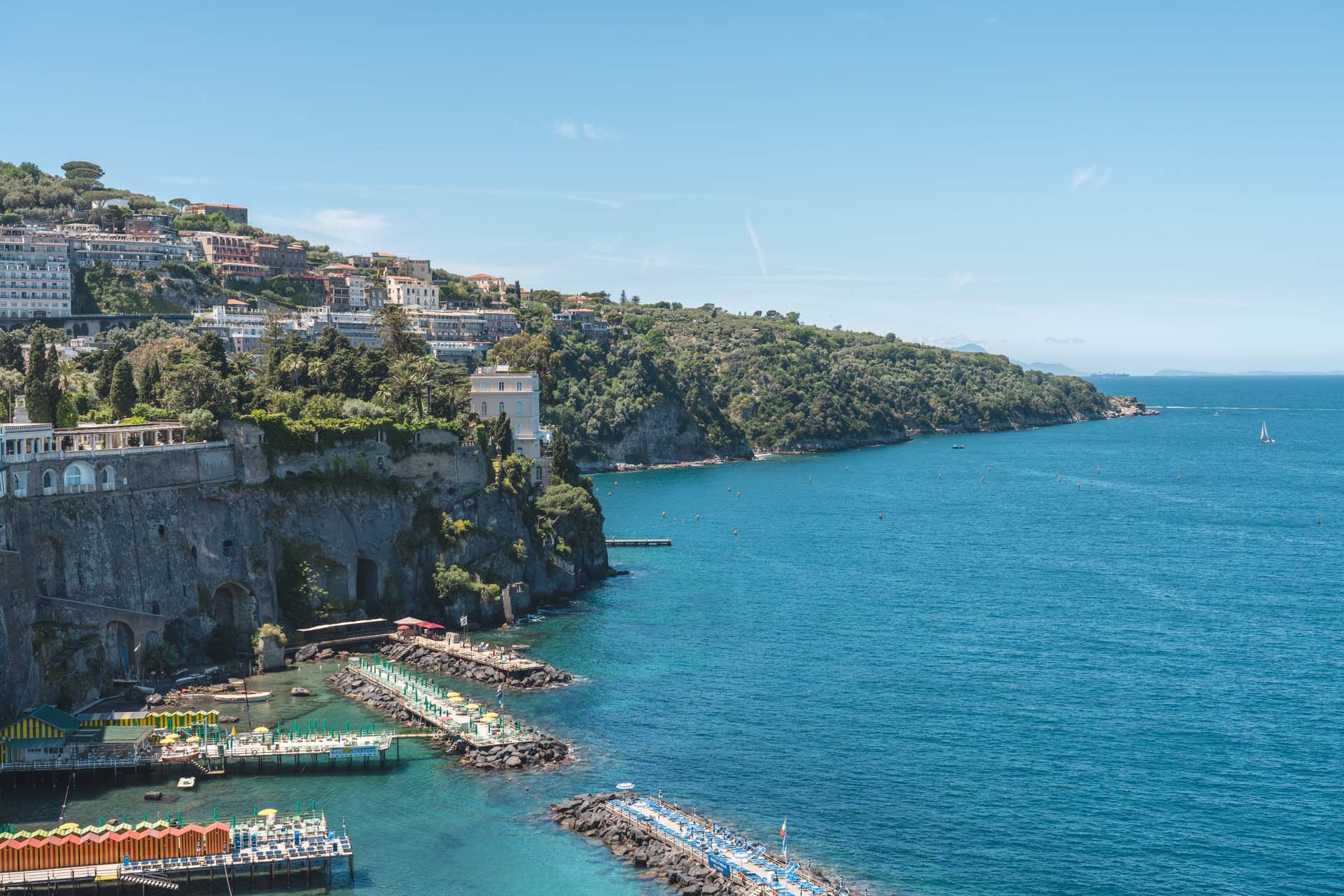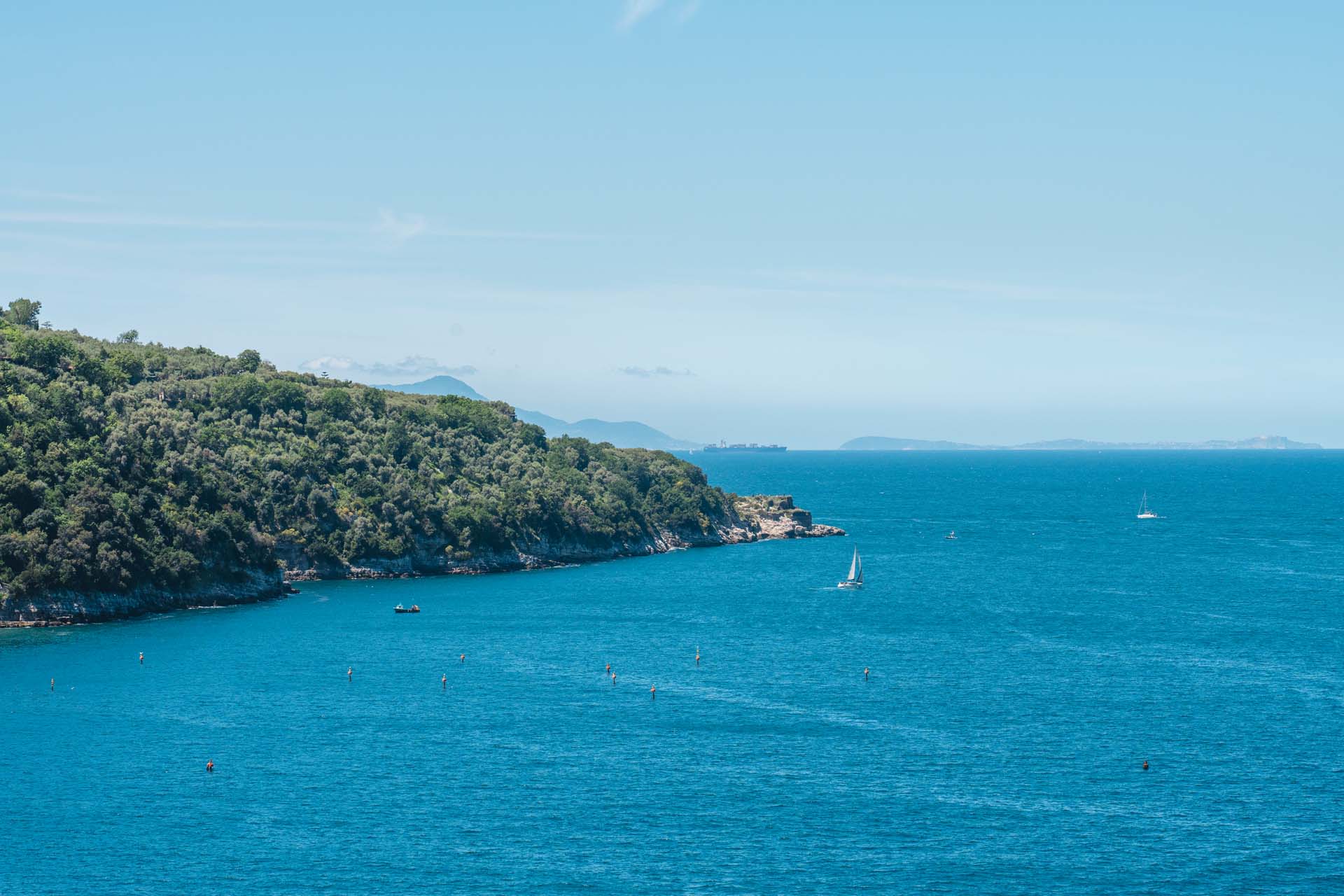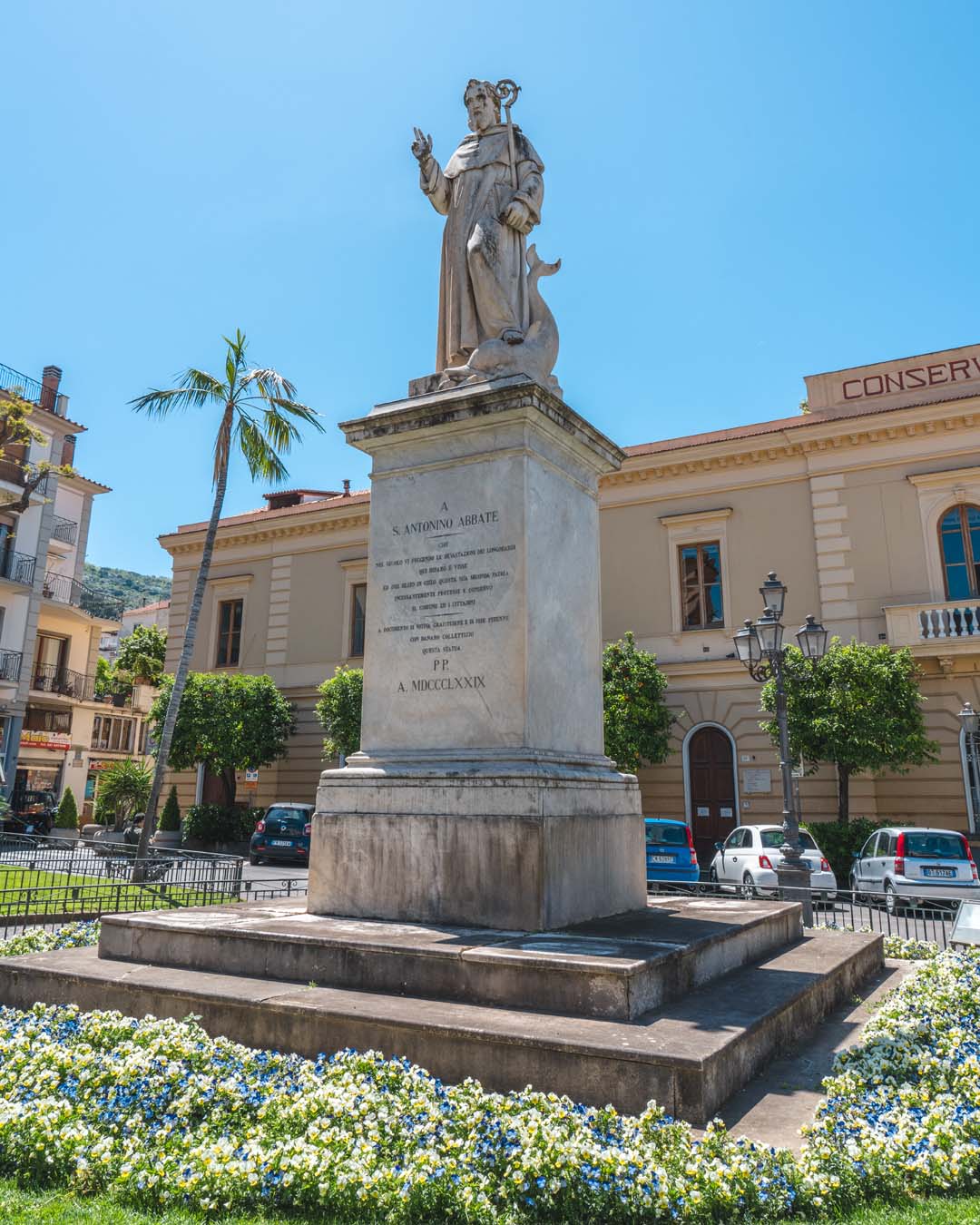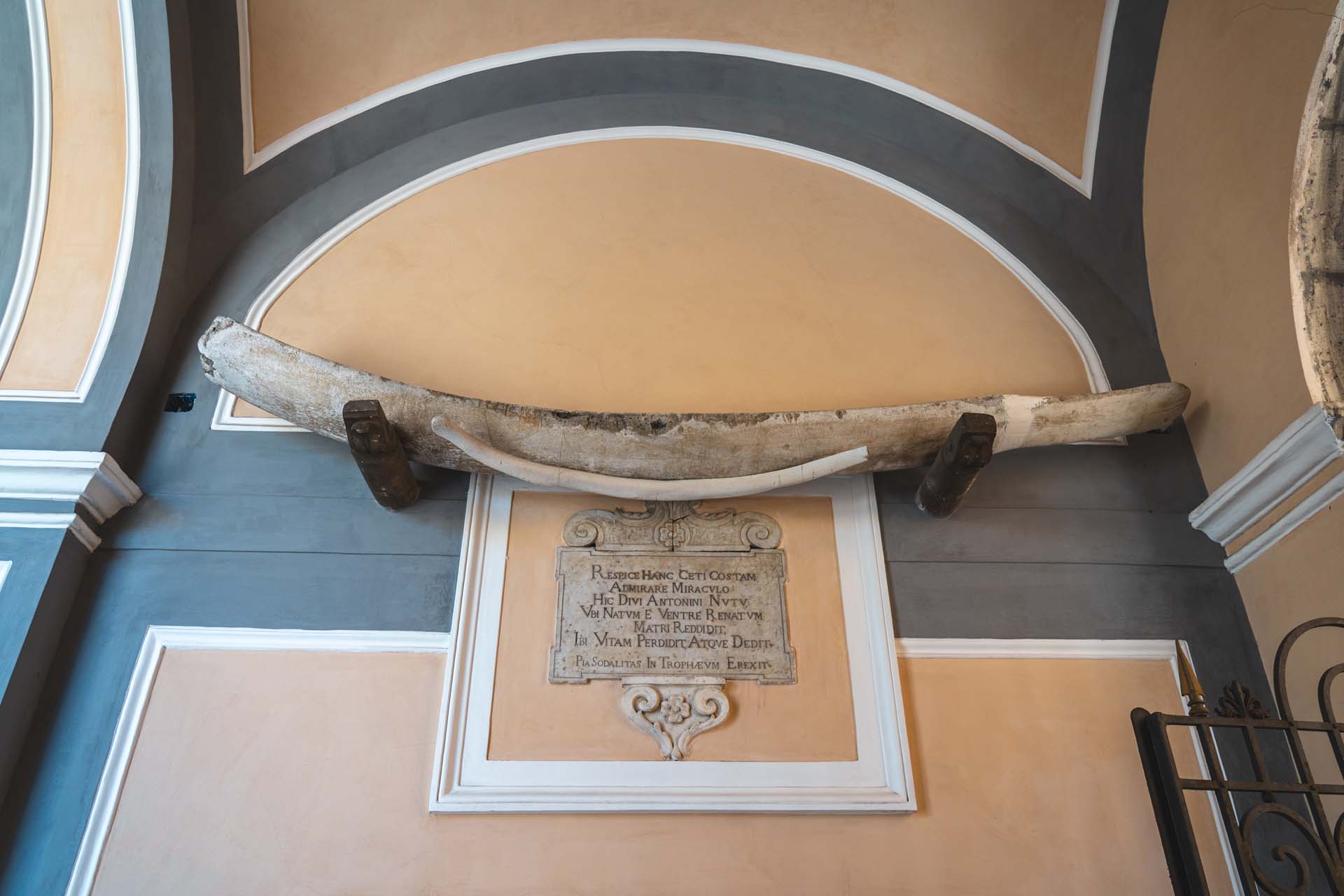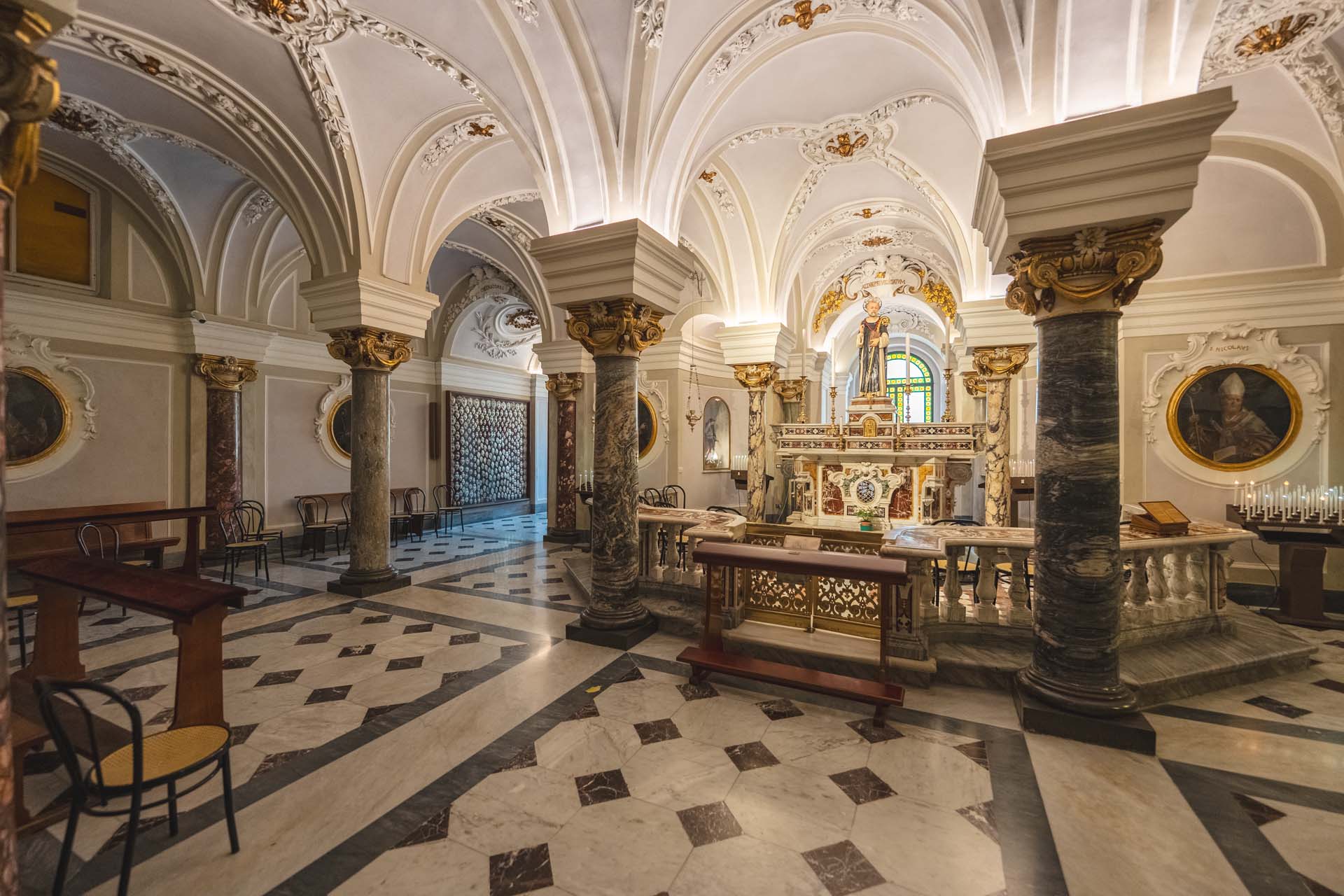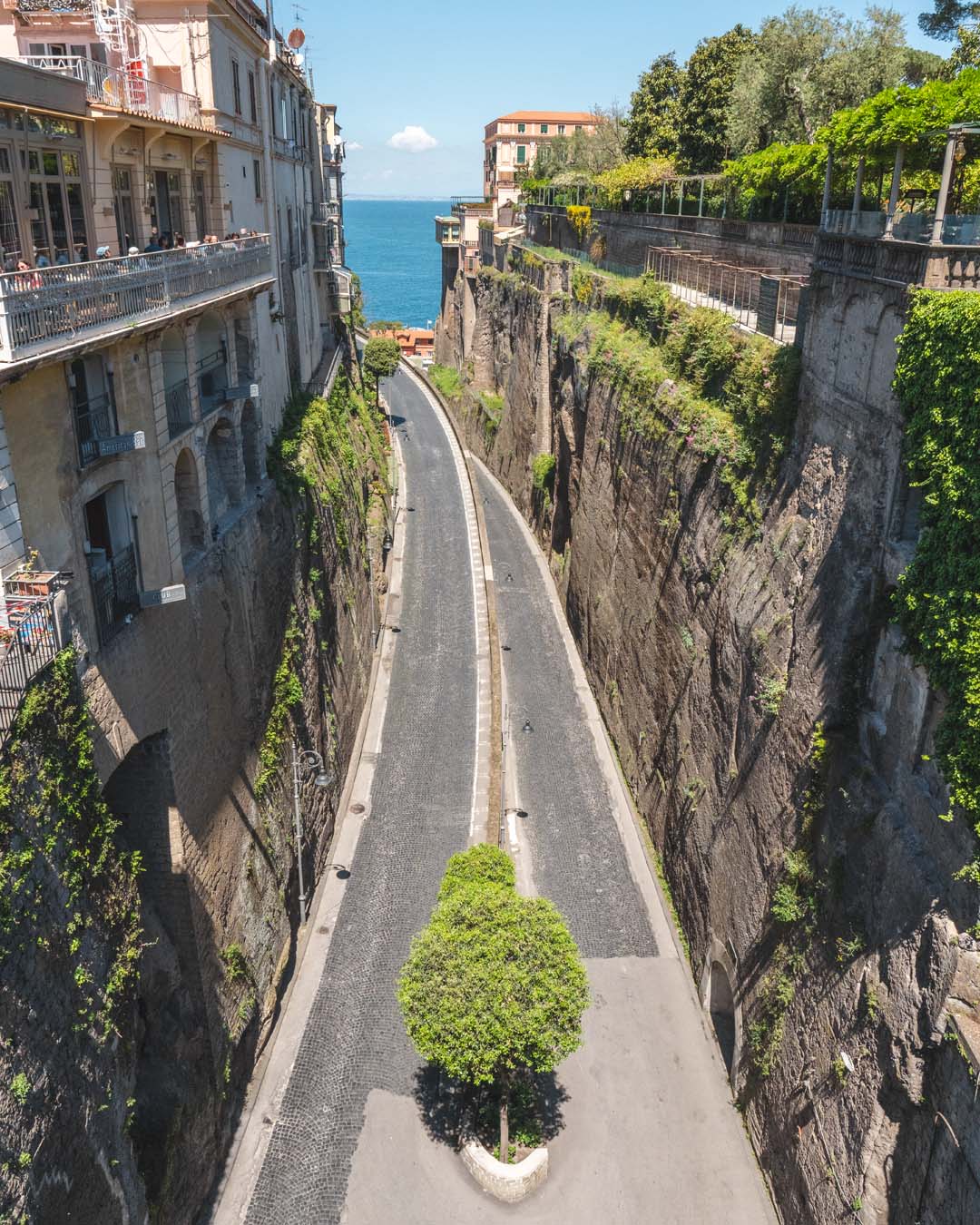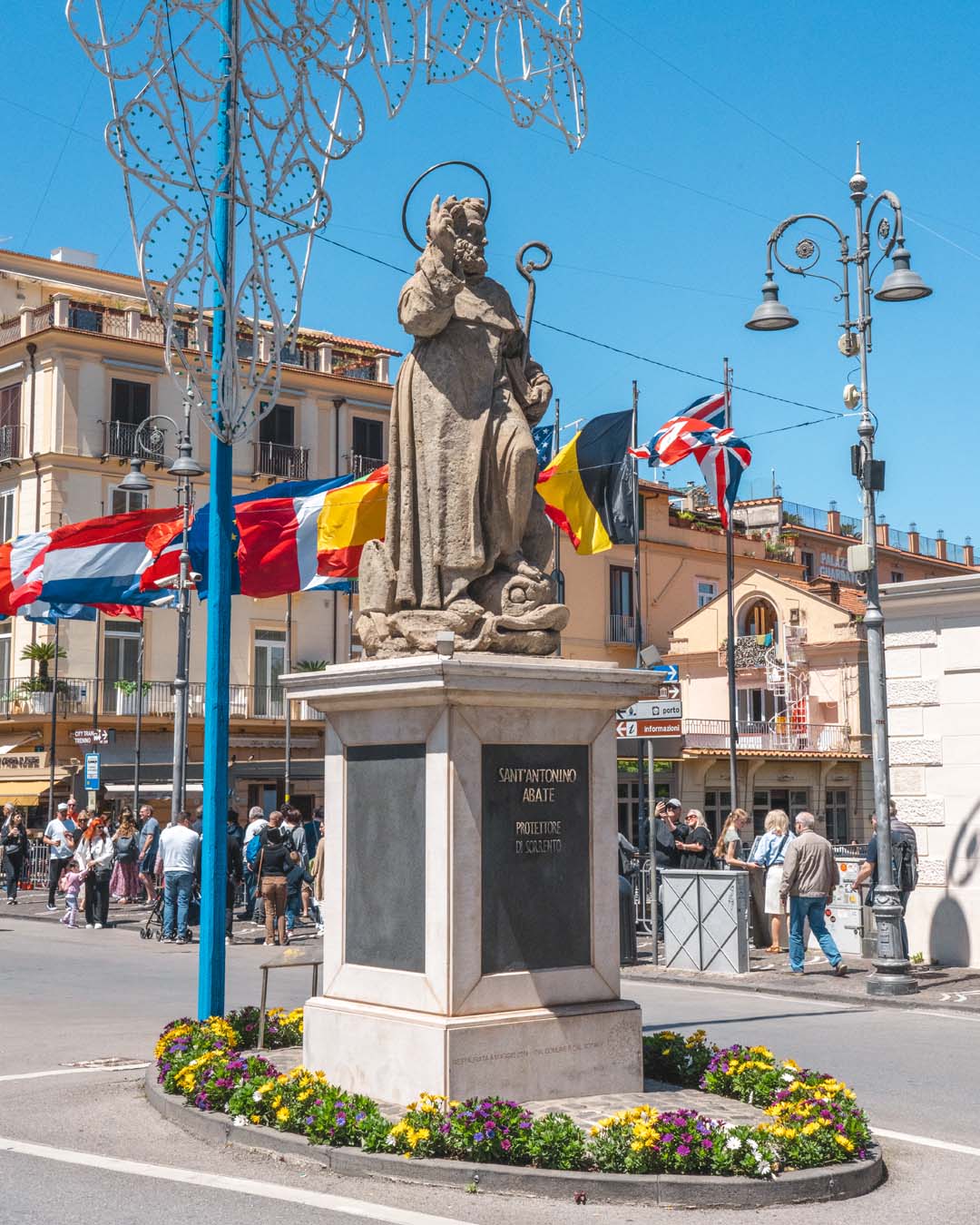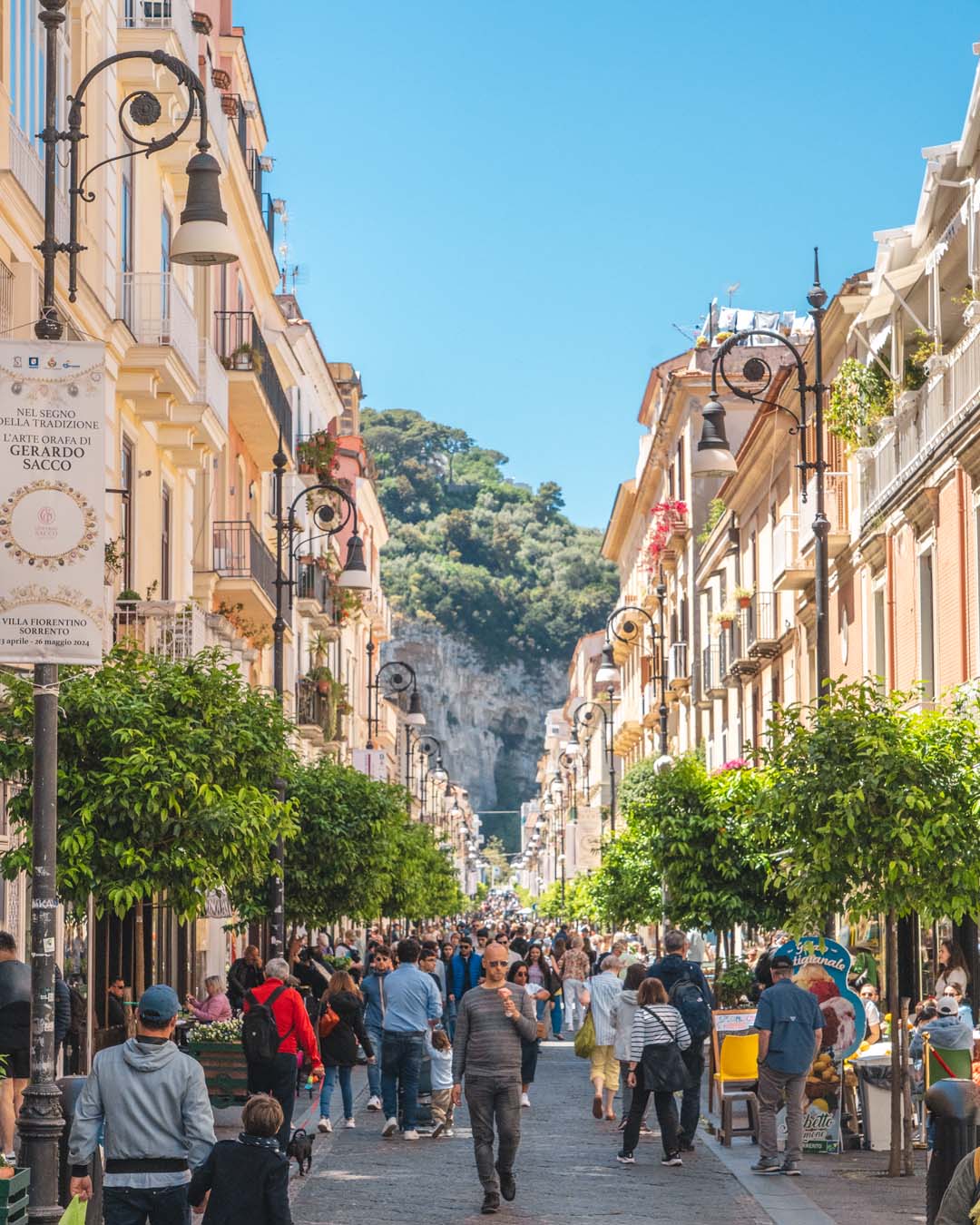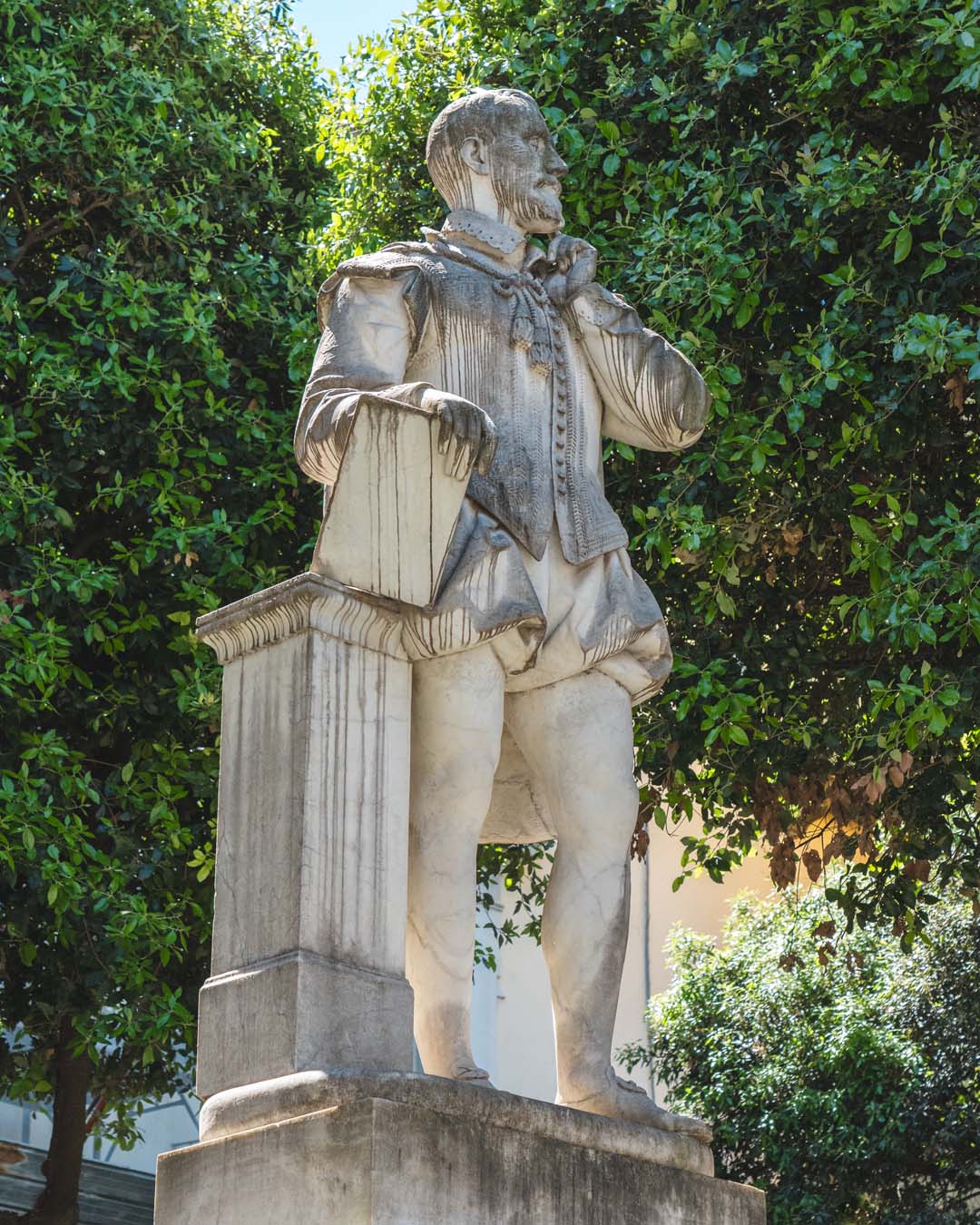What to see in 1 day in Sorrento
Sorrento is a city full of history and breathtaking views. This one-day walking itinerary will take you to the main attractions, as well as hidden spots known only to locals.
- Part one: Marina Grande, Villa Comunale park, Valley of the Mills
- Part two: Old city walls, viewpoint, ancient Roman streets
- Bagni della Regina Giovanna
- Museo Correale, Museo della tarsia lignea
Part one
Marina Grande, Villa Comunale park and Valley of the Mills
The first part of the itinerary starts at Marina Grande and ends at the Valley of the Mills, near Sorrento’s main square. The route can also be done in reverse.
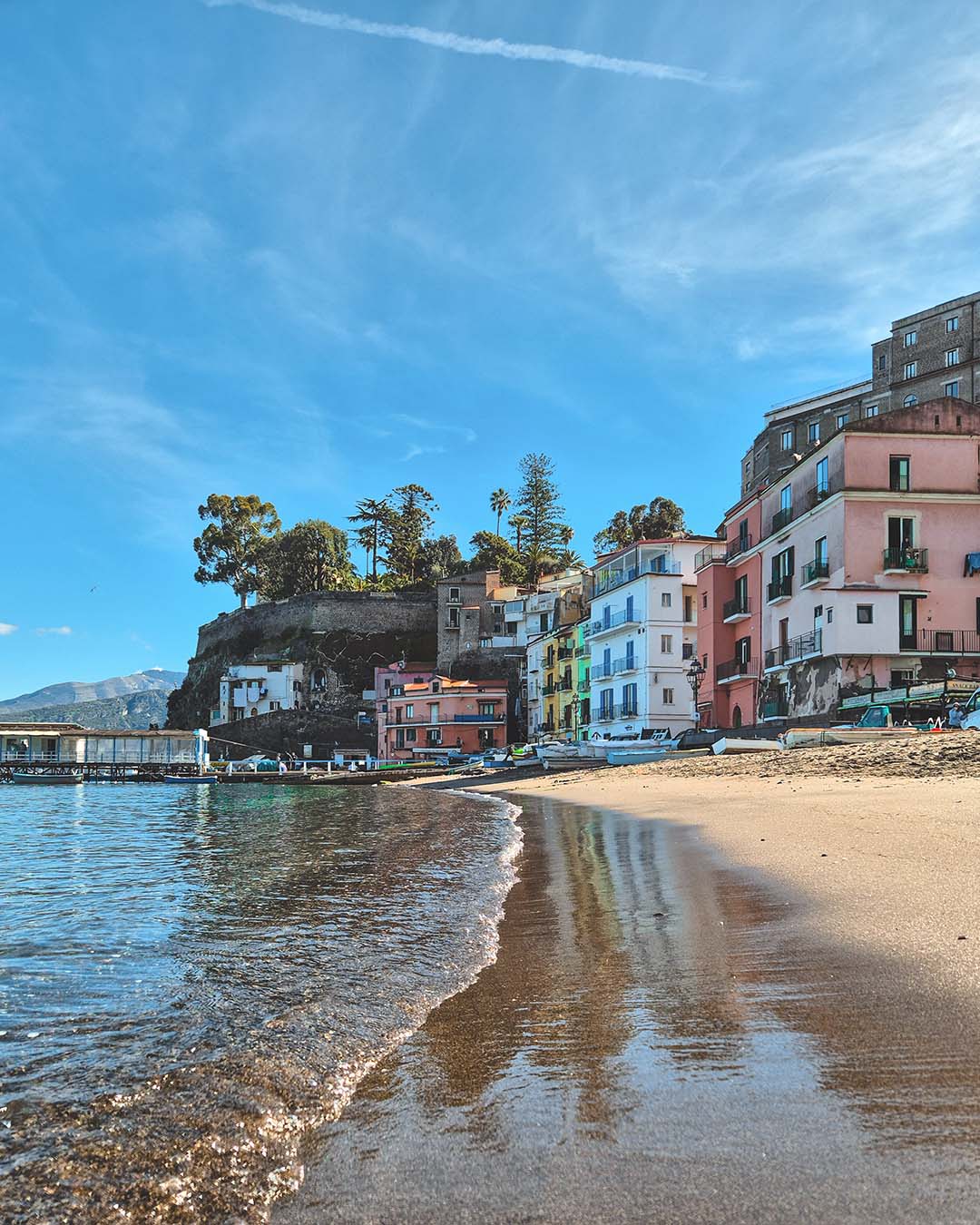
1. Marina Grande
ITINERARY START
Marina Grande is the picturesque fishing village of Sorrento. It was the setting for the famous film “Pane, amore, e…” directed by Dino Risi and starring Sophia Loren. This vibrant neighborhood is home to bars where you can sip a refreshing cocktail and many restaurants offering traditional dishes and the freshest seafood from the Gulf of Naples.
Beyond preserving Sorrento’s maritime soul, Marina Grande is also the starting point for boat tours to Capri and the Amalfi Coast, as well as kayak and SUP excursions to the scenic Bagni della Regina Giovanna.
From here, pass through the ancient double-arched gateway, built in the pre-Roman era using tuff and limestone, and continue towards the scenic viewpoint at Piazza della Vittoria.
2. Piazza della Vittoria viewpoint
650m | 10′
The view stretching from Hotel Syrene to Hotel Tramontano has been captured in hundreds of paintings since the 1600s, many of which are now displayed in major international museums. This iconic landscape drew attention not only for its natural beauty but also because it was once believed to be the birthplace of the famous poet and writer Torquato Tasso (Sorrento, March 11, 1544 – Rome, April 25, 1596).
Looking down to the left, you can see the remains of the ancient nymphaea from the Roman villa of Agrippa Postumus, grandson of Emperor Augustus. Dating back to the second half of the 1st century BC, these ruins feature brickwork, opus reticulatum, and mosaics. Even older fishponds can be spotted about 50 centimeters below the current sea level.
At the center of the green square stands a winged Victory statue, dedicated to Sorrento’s fallen soldiers of World War I. Created in 1926 by Francesco Jerace, it is a tribute to courage and sacrifice.
3. San Francesco cloister
200m | 3′
San Francesco cloister is a peaceful and beautiful spot where history, art, and nature come together in a timeless atmosphere. Built in the 14th century next to the San Francesco church, it is a jewel of Gothic-Arab architecture, with its intertwined arches and a delicate play of light and shadow.
In addition to being a place of meditation and spirituality, San Francesco cloister also hosts concerts and cultural events.
4. Villa Comunale park
50m | 0′
The Villa Comunale park of Sorrento is the perfect place to take in the breathtaking view of the Gulf of Naples. Directly ahead rises the majestic Mount Vesuvius; to its right lies Pompeii, while to the left, you can spot the skyscrapers of Naples’ Centro Direzionale and, further on, the Campi Flegrei. Below the viewpoint, you’ll find some beach clubs, and a bit further to the right, Marina Piccola, the ferry port. To the left, the coastline ends with the Villa of Pollio Felice, also known as the Baths of Queen Giovanna (Bagni della Regina Giovanna).
5. Saint Antonino basilica
200m | 3′
The route continues towards the Saint Antonino basilica and the square that shares its name, home to Sorrento’s Town Hall. Saint Antonino (Campagna, after 550 – Sorrento, February 14, 625) is the city’s patron saint, honored with a solemn celebration and a picturesque procession every February 14.
At the entrance of the basilica, two massive whale bones welcome visitors, a testament to an ancient miracle attributed to the saint. According to tradition, Saint Antonino saved a child who had been swallowed by a whale, and these bones are a symbol of that miraculous event.
Inside, the church houses magnificent works of art and a richly decorated crypt, where the faithful gather in prayer before the statue of the saint.
6. Tasso square
120m | 2′
Piazza Tasso is the vibrant heart of Sorrento. At its center stands the statue of Saint Antonino, the city’s patron saint, a symbol of protection and faith for the people of Sorrento. The iconic flags waving along the edge of the square overlook the northern side of the Vallone dei Mulini (which we will explore in detail later), now transformed into the road leading to the port, connecting the heart of the city to the waters of the Gulf of Naples.
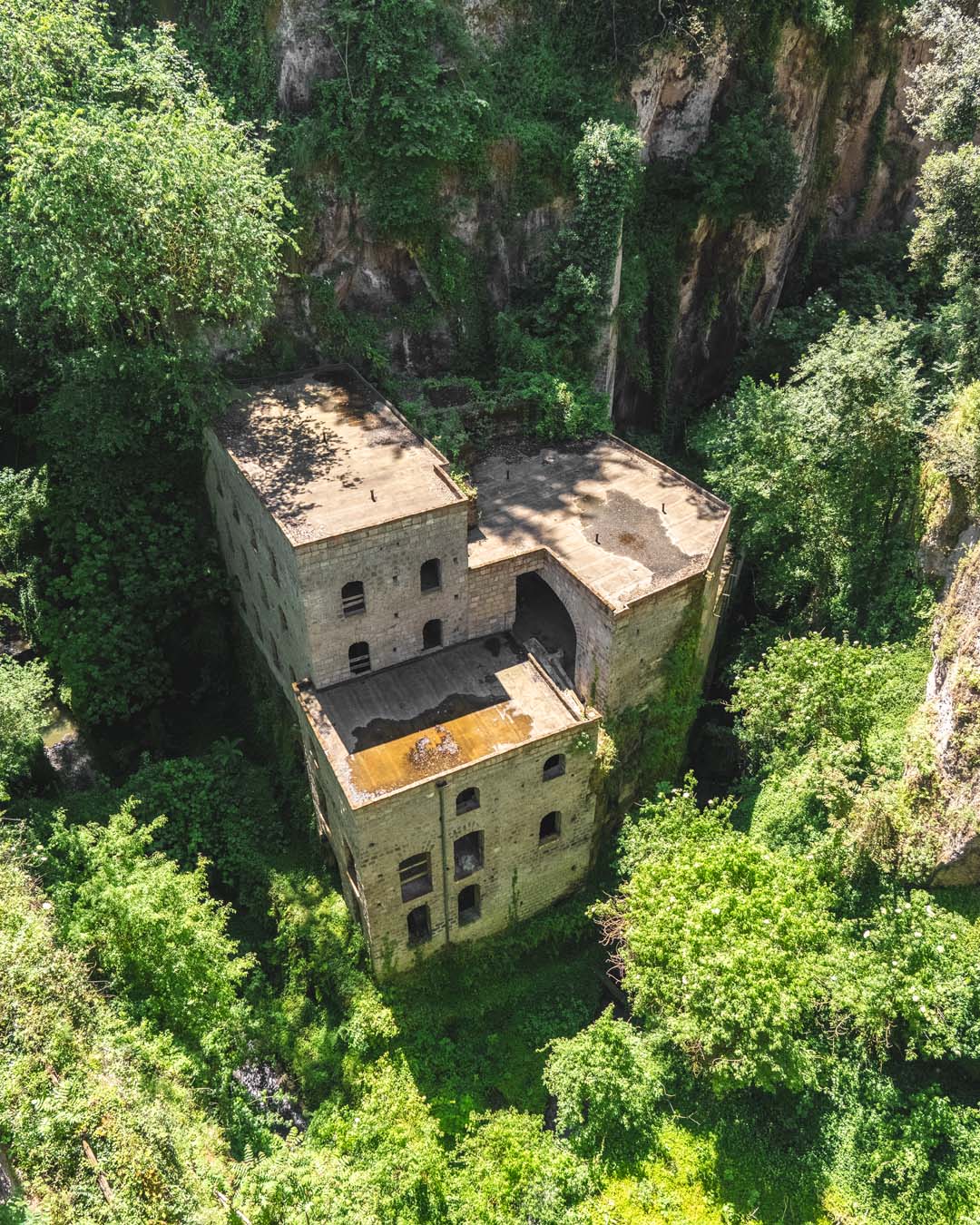
7. Vally of the Mills
140m | 3′
Hidden between the tuff cliffs of the city center, the Vallone dei Mulini is a deep gorge formed about 35,000 years ago as a result of a powerful eruption from the Campi Flegrei. Over millennia, erosion caused by the Casarlano and Sant’Antonino streams shaped this valley, creating a unique and evocative environment.
In the 17th century, taking advantage of the stream’s waters, a grain mill was built here. Later, a sawmill and a public washhouse were added, making the valley a bustling hub of craft and social activities.
The construction of Piazza Tasso in 1866 led to the partial filling of the valley, cutting off the industrial complex from the sea and altering the local microclimate. This change increased humidity and eventually caused the abandonment of activities in the valley at the beginning of the 20th century.
Today, the Vallone dei Mulini is enveloped in wild, lush vegetation, home to rare species like Phyllitis vulgaris, a fern that thrives in the area’s high humidity and limited ventilation.
Part two
Old city walls, viewpoint, ancient Roman streets
The second part of the one-day Sorrento walking tour starts and ends at the main square, Piazza Tasso. This itinerary takes you to discover the ancient city walls of Sorrento, a stunning viewpoint overlooking the entire Sorrento Peninsula, a picturesque waterfall, and the main decumanus (ancient Roman street).
1. Tasso square and Corso Italia
ITINERARY START
Dedicated to the renowned poet Torquato Tasso, honored with an impressive statue, Piazza Tasso is the vibrant heart of Sorrento, surrounded by cafés, gelato shops, and boutiques.
Although Piazza Tasso is a relatively recent creation, dating back to the mid-19th century, it seamlessly connects with Sorrento’s ancient urban layout, a Roman legacy still visible in the network of narrow streets branching out from the historic center. From here begins Corso Italia, the main shopping street: an elegant avenue where you can stroll among shops, enjoy artisanal gelato, or relax outdoors, soaking in the sunny, welcoming atmosphere of the city.
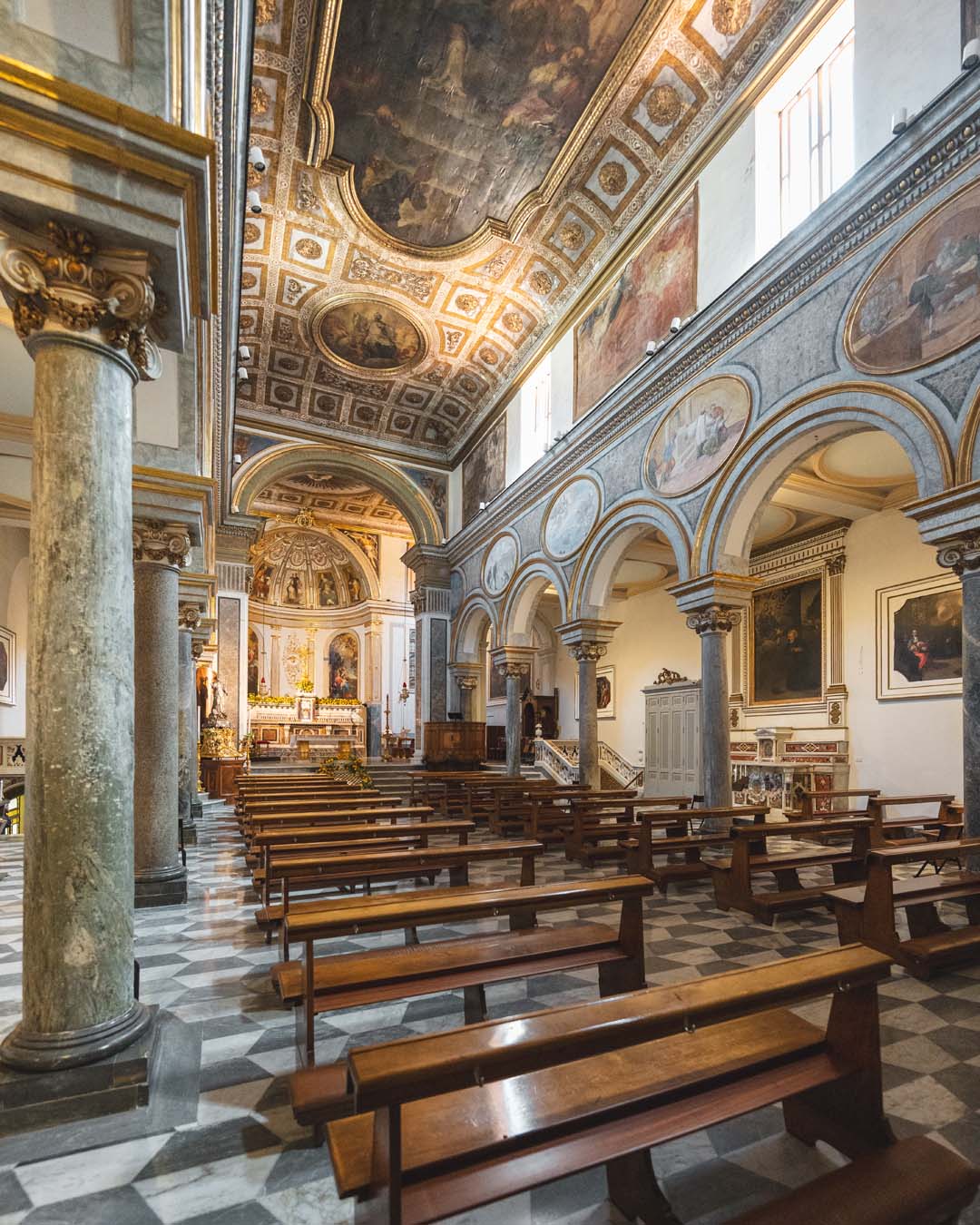
2. Saints Filippo and Giacomo cathedral
240m | 3′
The Cathedral of Saints Philip and James, also known as Sorrento’s Duomo, is the city’s main place of worship. Its origins date back to the 10th century, though it has been renovated multiple times over the centuries. Initially dedicated to the Virgin Mary, it received its current name in 1210, thanks to the relics of Saints Philip and James.
The cathedral’s neo-Gothic facade dates to 1924, while the interior preserves stunning frescoes by Giacomo del Po and Nicola Malinconico, along with exquisite Sorrentine wood inlay work. The bell tower, standing along the ancient decumanus, houses ancient marble elements, a silent testament to the city’s long history.
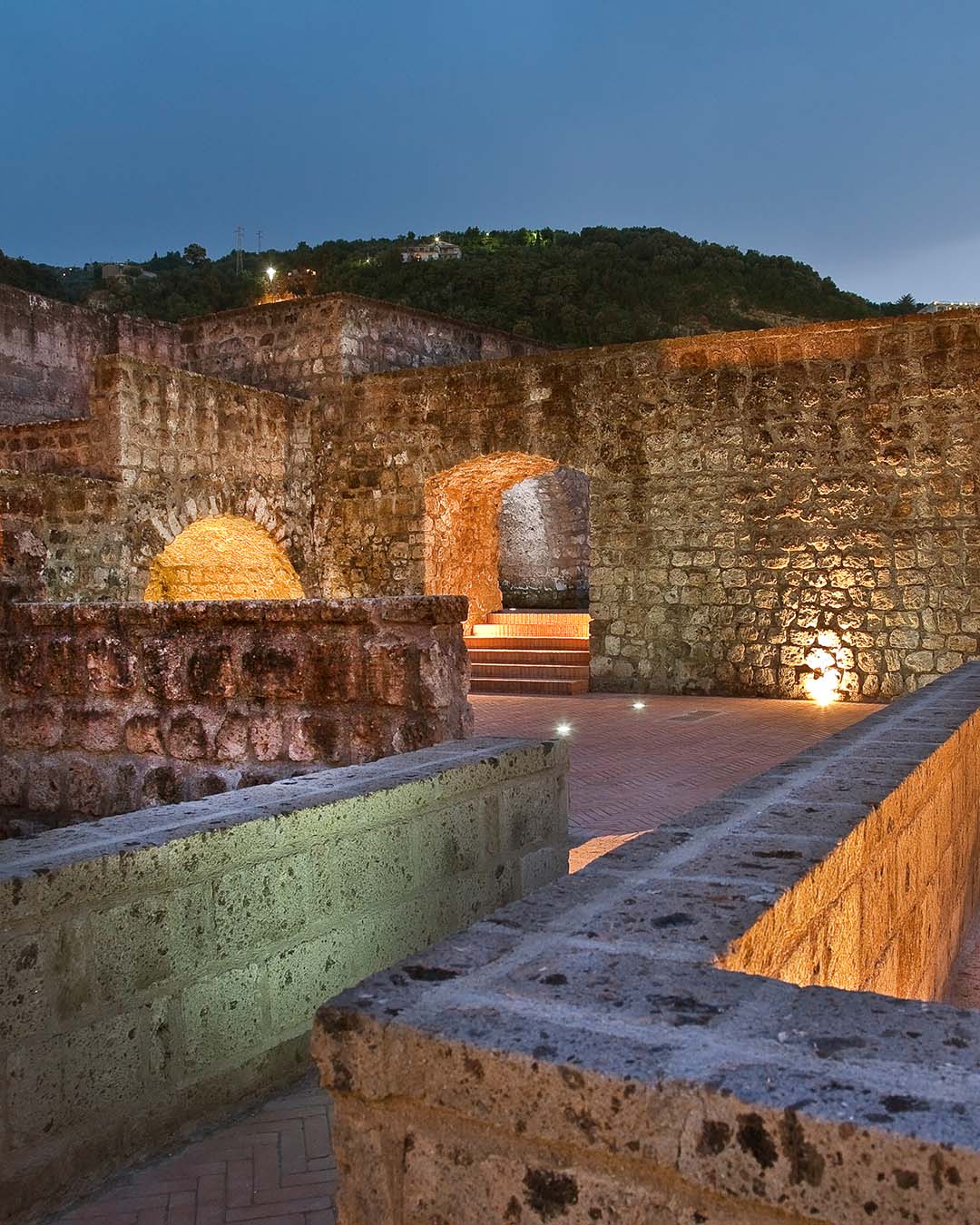
3. Bastion of Parsano (old city walls)
250m | 4′
The Bastion of Parsano, reopened in 2025 after careful restoration, is one of the most significant remnants of Sorrento’s ancient fortifications. Built in the 16th century during the Spanish viceroyalty, it was part of the defensive walls that once protected the city. Sorrento skillfully used its natural features for defense: the steep tuff cliffs on the seaward side, the Vallone dei Mulini isolating much of the city on the landward side, and the bastion and walls guarding the remaining sections. The recent restoration also reopened the ancient walkway along the ramparts, offering a scenic stroll that combines history and breathtaking views.
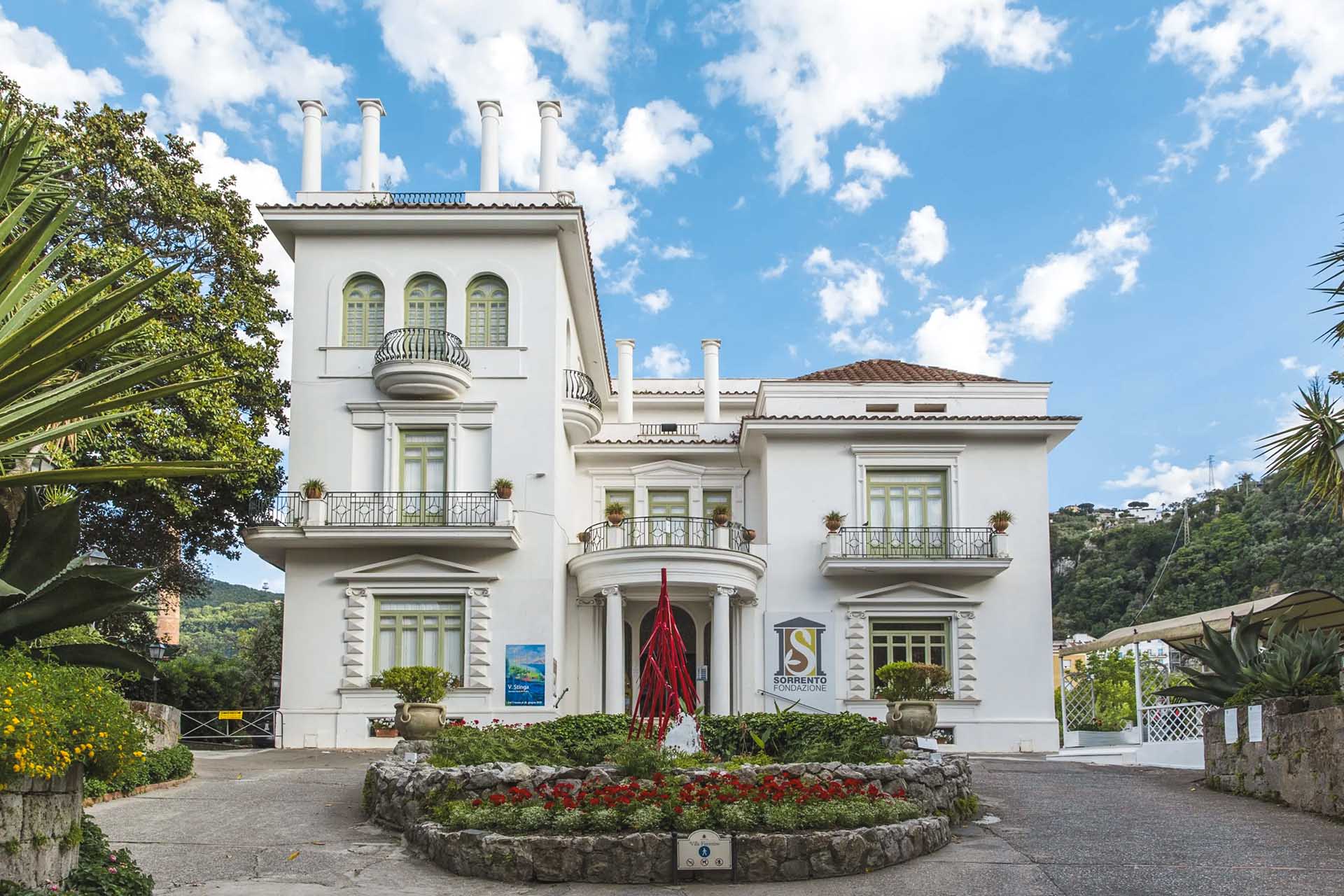
4. Villa Fiorentino
300m | 4′
Villa Fiorentino is one of the most elegant historic residences in Sorrento. Built in the 1930s by the Fiorentino-Cuomo family, renowned artisans known for their fine handkerchiefs, the villa was later donated to the city with the aim of transforming it into a cultural center.
Today, it is home to the Fondazione Sorrento, which hosts major cultural and artistic events, making it a vibrant hub for art, music, and exhibitions.
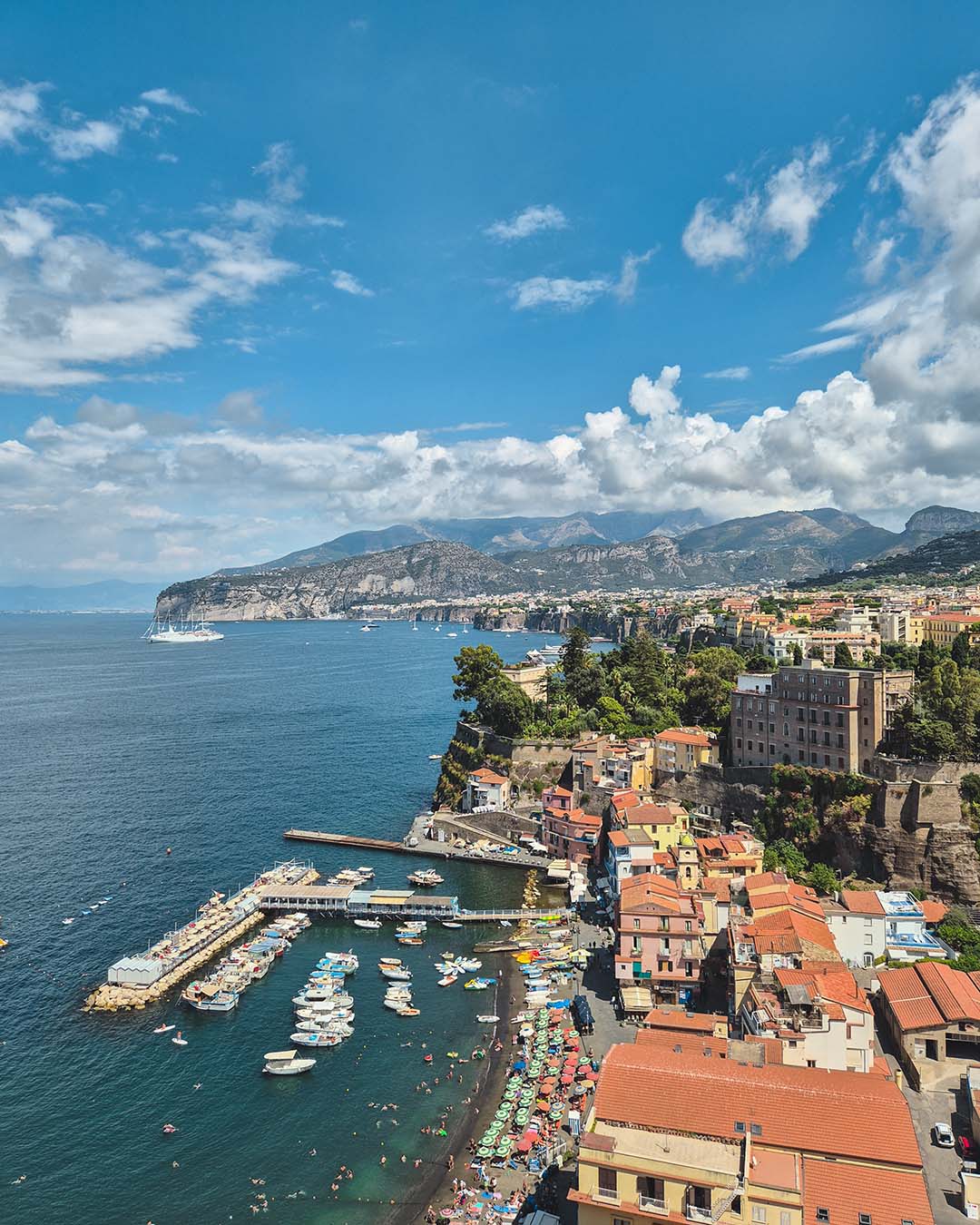
5. Sorrento Coast viewpoint
800m | 12′
The viewpoint along Via Capo is one of the most breathtaking scenic spots in Sorrento, a natural balcony overlooking the picturesque village of Marina Grande, with its colorful houses and fishing boats. From here, your gaze sweeps across the entire Sorrento Coast, following the jagged line of the tuff cliffs all the way to Punta Scutolo, where the land seems to dive into the sea.
At sunset, this panorama transforms into a painting of golden and pink hues, offering a moment of pure wonder to anyone who stops to admire it.
6. Rio della Conca and Neffola waterfalls
450m | 5′
UPDATE | It appears that the water from the taller waterfall (Rio della Conca) has been diverted into a channel, so it can no longer be admired. The smaller cascade (Neffola) now carries a much weaker flow than it once did, making it hard to spot as well.
Sorrento never ceases to amaze with its natural wonders. Just a short walk from the city center, two enchanting waterfalls captivate visitors, including one that plunges over 30 meters, carving the limestone rock in a thundering embrace with nature.
But water here is more than just a spectacle, it is also a witness to history. Above these waterfalls, hidden among the lush vegetation and inaccessible to the public, lies the Nicolucci Cave, an ancient refuge where artifacts from the Neolithic and Bronze Ages have been discovered, testifying to human presence since ancient times.
7. Via Fuoro, Via San Cesareo and Sedil Dominova
Via Fuoro and Via San Cesareo are two historic streets that run through the heart of Sorrento’s ancient center, following the old Roman urban layout of cardines and decumani. Via Fuoro, in particular, stretches along one of the main decumani, connecting the city from east to west. Its name may come from the Latin word “forum,” reflecting its historic role as an area of trade and commerce.
Today, these streets are alive with artisan shops, local product stores, and cozy cafés, preserving the authentic atmosphere of old Sorrento.
At the heart of this urban network stands the Sedil Dominova, the only surviving medieval noble seat in Campania. Built in the 14th century as a meeting place for the local nobility, it is distinguished by its elegant frescoed loggia and a dome covered in colorful majolica tiles, a testament to the prestige and history of ancient Sorrento.
